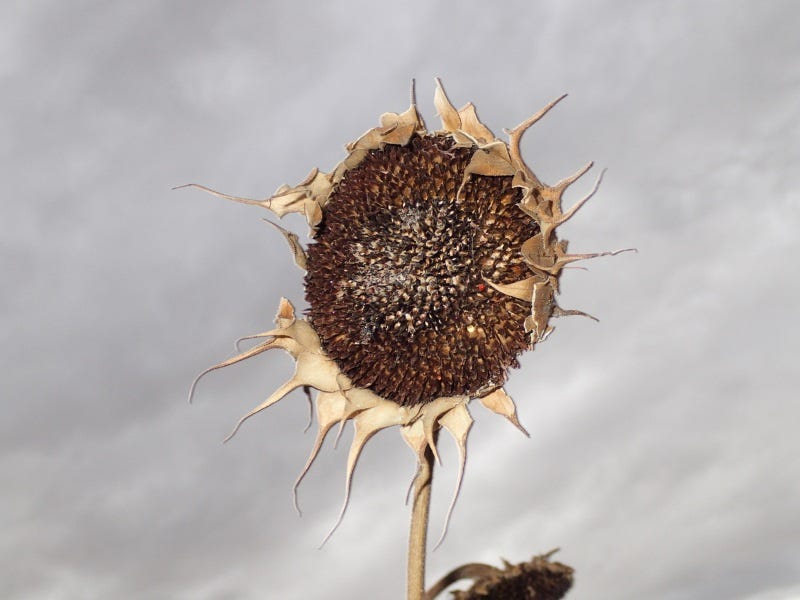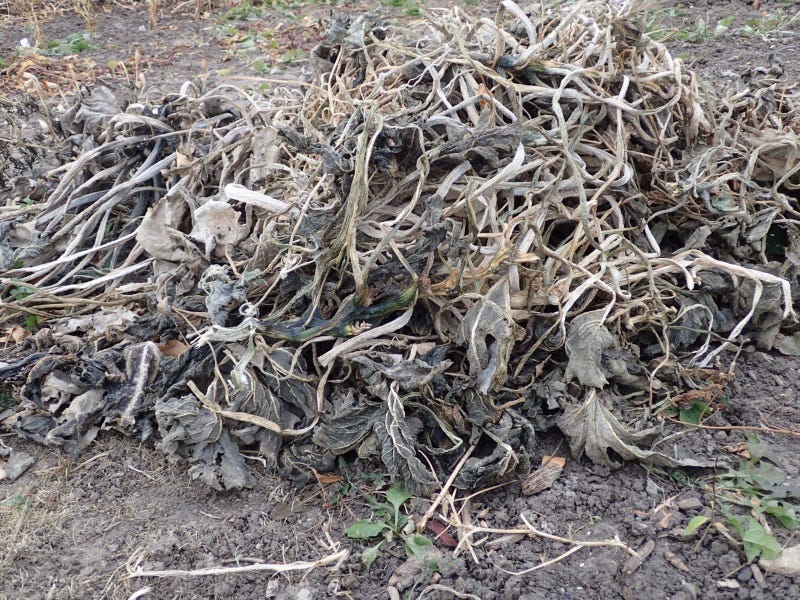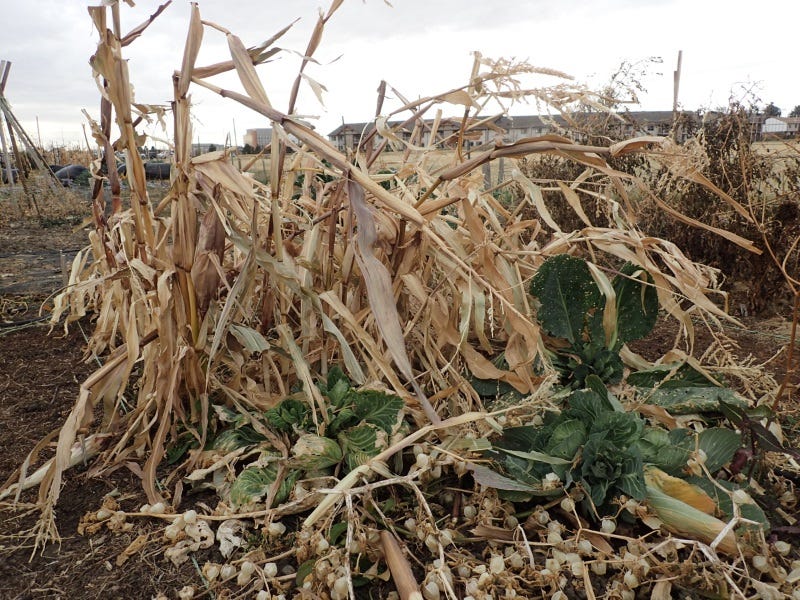Put Your Garden To Bed: 5 Fall Tips

By cleaning up the garden and hauling away debris this autumn you’ll create more time during spring for planting. So, grab a warm afternoon to remove spent vegetables and amend the soil, and you’ll end up with a great garden next year.
Put away the hardscape
While it’s akin to unpacking after a great trip, now is the time to put away the trellises and all the garden gear so you keep it preserved for another season. Empty the Wall-O-Waters—the water-filled plastic teepees that protect heat-loving plants—and hang them upside down. This allows them to drain completely before storing. If there is a significant amount of dirt or mildew in the tubes, use a two-inch brush and gently scrub each compartment, followed by a quick rinse before inverting it on a five gallon bucket to dry.
Stack and store tomato cages, tossing any that are broken or excessively bent. Find a place in the garage or storage shed where you can keep these—they’ll be easy to find next season.
Locate the twine left in your garden. If you can’t roll it up and salvage for next year, pick it up and dispose of it. While we often think that birds might find pieces of string beneficial for nest building, it can wrap around their legs and cause death, particularly in fledglings. Toss it if you’re not going to use it.

What to cut down, what to leave
The garden doesn’t have to be spotless going into winter, but pulling out annual flowers and vegetables is best done before snow covers the garden. If plants sit beneath the snow throughout winter they often end up slimy by spring.
If the garden is dry, water it for a day or two before working on the soil. You don’t want to work with soil that’s nearly as hard as cement.
Most everything in the vegetable garden can be easily pulled, although larger, deep-rooted plants, such as the tomatoes or exceptionally large cabbage, might need a little help via shovel or garden fork. Corn also offers a little resistance. A lot of gardeners cut corn off at the base to use the stalks for decoration. After that they use a garden fork to loosen roots, which helps in removing the remaining stalk and roots.
Some plants can be left to benefit wildlife. Sunflower stalks and other bulky stems, often hold native bee eggs, as well as other beneficial insects. And leave standing seed-heads of herbs, such as dill or echinacea, to provide sustenance and a perch for birds. These will be easy to pull in the spring after serving the birds well all winter.

What you can compost (and what you can’t)
Compost piles need a balance of nitrogen-rich ingredients, such as manure, along with a carbon source. That combination most efficiently breaks down matter. Spent plants from your garden (along with leaves from the yard) are ideal to add to the compost pile, although for optimum results it’s best to break down materials before layering them in the pile. Chop corn stalk, tomato plants, vines, and anything with a bulky stem into four-to six-inch pieces. For small amounts, using a pair of hand clippers is sufficient for the job. For larger gardens, grab a shovel and start chopping.
Need the best tools for digging and chopping? Start here.
If you have any plants that exhibited signs of disease, such as yellowing leaves, spots, mildew, or any other indication of a pathogen, bag the affected plants and dispose of them in the trash. Even though heat is generated during the composting process, it is typically not hot enough to kill most garden diseases, so disposing of these plants is the best plan.
Adding compost and organic matter
It takes time for compost and organic matter to make a difference in the soil. Before adding more material to your compost pile, clear out the finished compost to spread in areas where you need it most. You can also bring in bags of commercial compost if you don’t have enough at home.
Many gardeners also spread leaves over the garden during fall, creating a blanket to feed the earthworms and add tilth to the soil. Chop them, if possible, with a lawnmower and till them into the first few inches of soil. This helps break them down during winter, as well as preventing them from blowing into your neighbor’s yard.

Time to test and add micronutrients
To see where the nutrient levels stand at the end of the season, buy a simple kit found in most garden centers. This gives you an idea of what your soil might lack, especially if plants seemed to struggle for no apparent reason.
One of the most common issues with western gardens is higher alkalinity levels in the soil. Most vegetables and flowers prefer a pH of 5.5 to 6, and much of the soil throughout the region is well above seven. This prevents the plants from utilizing particular nutrients, such as iron, indicated by yellowing leaves and lack of vigor.
Although you’ll never permanently correct a pH imbalance, stay on top of it by adding elemental sulphur. Use approximately 10 pounds per 1,000 square feet. When doing so, pick a calm day and always wear gloves, long sleeves, eye protection, and a mask. You don’t want to breathe in the dust when you apply it. Turn it into the soil with tiller or a rake.
There are other amendments, such as Azomite and rock dust, that provide natural minerals to the soil and facilitate nutritional uptake. This is also the time to add fresh manure since it ages for a long time and you won’t have to worry about potential pathogens.
Don’t sweat it
Clear the garden in the fall to save time in the spring and minimize any disease issues. But if you can’t finish it all, don’t fret. Grab a warm day during winter to wrap up remaining tasks, which should tide your gardening enthusiasm until spring.
Do you know what you need to plant in the fall in order to catch early spring blooms?
